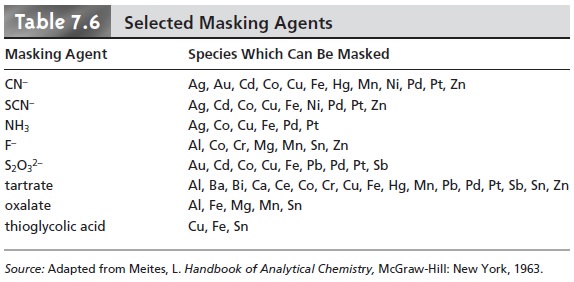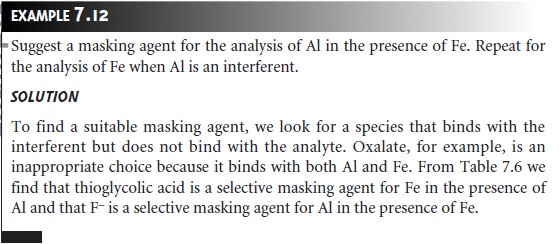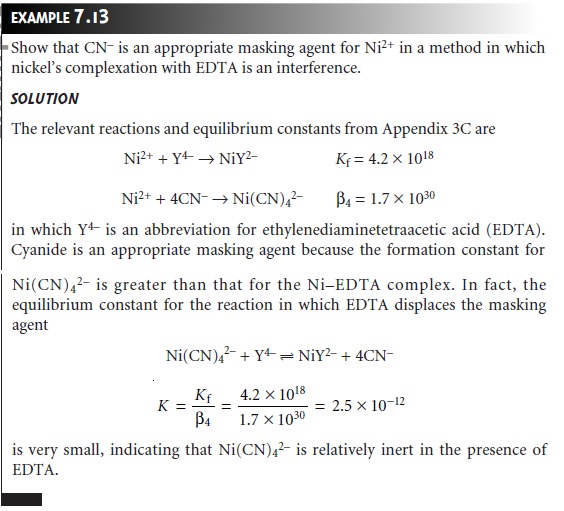Chapter: Modern Analytical Chemistry: Obtaining and Preparing Samples for Analysis
Classifying Separation Techniques: Separations Based on Complexation Reactions (Masking)
Separations Based on Complexation Reactions
(Masking)
One of the most widely used techniques for preventing an interference is to bind the interferent as a soluble complex, preventing it from interfering in the analyte’s deter- mination. This process is known as masking.
Technically, masking is not a separation technique because the analyte
and interferent are never physically separated from each other. Masking can, however, be
considered a pseudo-separation technique, and is in- cluded here for that reason. A wide variety
of ions and molecules have been used as
masking
agents (Table 7.6),
and, as a result, selectivity is usually not
a problem.


As
shown in Example
7.13, a masking
agent’s effectiveness can
be judged by considering the equilibrium constants for the analytical and masking reactions.

Related Topics